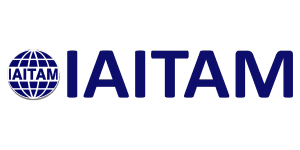Sustainable Impact: Chain of Custody & Asset Resale in ITAD
Circularity, Chain of Custody, Transparency, and Resale: Key trends for building a secure and sustainable ITAD program.

Driving Sustainability in IT: The Evolution of Chain of Custody and Asset Resale in IT Asset Disposition
In the IT Asset Disposition (ITAD) sector, sustainability and the circular economy are influential forces, as evidenced by findings from the 2023 IAITAM Member Organizations IT Asset Disposition Services Surveys. This article will examine the challenges related to Chain of Custody and Asset Resale, emphasizing their implications for the technology lifecycle.
Definition Chain of Custody
According to NIST Chain of Custody is defined as “A process that tracks the movement of evidence through its collection, safeguarding, and analysis lifecycle by documenting each person who handled the evidence, the date/time it was collected or transferred, and the purpose for the transfer.”
Chain of Custody and True Circularity: Next User
As we look at Chain of Custody in the context of IT Assets, the survey results show a notable uptick in the emphasis on knowing WHO is using your devices the second time around. Organizations are increasingly recognizing the importance of tracking and documenting the entire journey of “Who” becomes the next user as IT assets progress from their initial deployment to their eventual disposition, whether for reuse or recycling. This intensified focus on chain of custody not only ensures transparency and accountability but also aligns seamlessly with the principles of a circular economy. It facilitates the secure transition of an organization’s assets as they retire from their first use and the social impact devices can make as affordable technology options to the second and third users.
Resale or Reuse as a Growing Trend in Asset Disposition
Organizations are increasingly embracing the concept of resale or reuse in their asset disposition strategies. Rather than relegating assets to recycling, businesses are recognizing the value in extending the lifecycle of IT equipment. This growing trend not only contributes to a reduction in electronic waste but also aligns with broader ESG goals of sustainability and circularity.
Changing Perceptions of Equipment Value Over Time
The survey also indicates a noteworthy evolution in perceptions regarding the value of equipment over time. Traditionally, organizations might have viewed retired IT assets as obsolete and of limited value.
Yet, a significant shift in mindset is underway, as organizations recognize the value of their assets amid the rising trend of selling refurbished and recertified assets on secondary markets through major retailers. This change in perception is driving a strategic reassessment of asset lifecycle management, promoting a more sustainable approach to reuse. Organizations are questioning the practice of sending laptops and smartphones to be recycled without exploring resale opportunities and considering the potential positive impact on ESG (Environmental, Social, Governance) reporting.
The Collective Impact on the Circular Economy
In line with these trends, the IT industry is becoming a significant player in advancing the circular economy. Gartner’s research forecasts a substantial increase in hardware vendor portfolios linked to circular initiatives—from 20% today to a staggering 80% by 2030. This transition signifies a commitment to re-manufacturing and reusing end-of-life devices, diverting them from landfills and overseas shipments. IT organizations are now aligning their goals with Original Equipment Manufacturers (OEMs) to establish circular supply chain models. This involves a comprehensive approach, encompassing the collection of assets, extension of lifetimes through reuse, repair, and right to repair initiatives, remanufacturing, refurbishing, recycling, and resale to the next user. The ITAD process is no longer a linear progression but a circular and sustainable ecosystem that maximizes the value of each asset at every stage of its lifecycle.
Shaping a Sustainable Future
The merging of Chain of Custody and Asset Resale in the ITAD arena is steering the industry toward a more sustainable and circular future. The growing emphasis on transparency, the embrace of resale and reuse, and the changing perceptions of equipment value collectively signify a shift in how organizations approach ITAD. As the IT industry propels towards 2030, the commitment to circularity will not only drive environmental stewardship but also position businesses at the forefront of responsible and sustainable technology practices. The evolution has begun, and organizations must actively participate in shaping a future where every IT asset has a next user, contributing to a circular economy and closing the digital divide.
